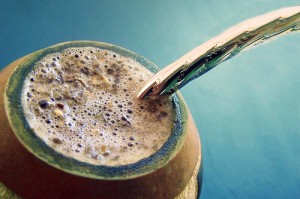The knowledge that Advanced Glycation End ( AGE ) are found in cooked foods containing sugars and amino acids is not new. We have known that heat can form AGE for a century. The reaction changes the food, quite often enhancing its color, aroma, and flavor. We are lured by the seductive taste of Advanced Glycation End rich ( AGE-rich )foods. Sometimes we can even see the formation of AGEs when foods turn brown, such as on the outer crust of bread or oven-roasted poultry skin. However, just because a dietary item doesn’t have a distinctive dark-brown coat, it does not mean the item is AGE-free.
When it comes to AGE formation in food, moisture matters. Foods prepared with high heat in the absence of water — such as oven-roasted, grilled, or fried meats are Advanced Glycation End heavyweights. Much lower AGEs are found in foods prepared in the presence of moisture by boiling, poaching, stewing, or steaming. This is regardless of whether the food is largely protein-rich or carbohydrate-rich. Consider these nutrition facts:
– Crispy rice cereal contains 220 times more AGEs per gram than boiled rice.
– Fast-food fries contain 87 times more AGEs per gram than a boiled spud.
– A fried egg has 62 times more AGEs than a poached egg.
– A serving of oven-fried and breaded Atlantic whiting has 16 times more dietary AGEs per gram than salmon sushi.
– Biscotti has 30 times more AGEs per gram than a toasted bagel.
 The bottom line is that foods cooked for extended periods with so-called high and dry heat—at high temperatures with no moisture—are the foods most likely to be massive contributors to your Advanced Glycation End ( AGE ) load and your skin AGEing.
The bottom line is that foods cooked for extended periods with so-called high and dry heat—at high temperatures with no moisture—are the foods most likely to be massive contributors to your Advanced Glycation End ( AGE ) load and your skin AGEing.
Even when total calorie content is kept equal, a low-AGE diet can reduce blood levels of AGEs by 30 percent after just three days. Since higher blood levels of AGEs are associated with greater inflammation and oxidative stress, a 30 percent reduction in circulating AGEs is significant for your collagen and elastin.
Even a single high-AGE beverage has been shown to impair blood flow in patients with diabetes. This was observed after only ninety minutes of AGE consumption and lasted, in some cases, for as long as six hours.
We cannot overstate the importance of reducing dietary AGEs in the maintenance of youthful skin and the prevention of visible signs of aging. We are estimated to consume about 75 milligrams of AGEs per day in our diet, and other chemicals that are closely related to and easily converted to AGEs may exceed 1,000 milligrams per day. Now we ask you, would you ever take a 1,000-milligram supplement of anything that may wrinkle your skin? Of course not. Yet decisions to cook and consume foods prepared with high and dry heat are in essence like taking that wrinkling tablet every day. Think about that the next time biscotti are passed around at the office party.
Yet another negative effect of higher dietary AGE consumption is that it is associated with an increased elimination of zinc from the body. Zinc plays an important antioxidant and anti-inflammatory role in the skin and has been shown to help acne as a supplement, so enhanced elimination of zinc via the urine would hardly be good for the skin.
